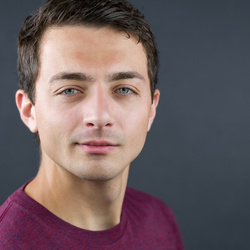Understanding your camera’s modes is crucial to controlling how your photos turn out. It’s what separates a snapshot from a well-crafted image, and knowing when to use each mode can dramatically improve your photography. If you're new to photography, here's what you need to know about camera modes.
Coming to you from Ed Verosky, this practical video explores the different camera modes and how each one impacts your photos. Verosky begins by explaining the basics of exposure, which is all about how bright or dark your image appears. The key is finding a balance between the three elements of the exposure triangle: aperture, shutter speed, and ISO. These settings work together to control how light is captured, and understanding them is the foundation of good photography.
In the video, Verosky breaks down the different camera modes, starting with Auto mode. Auto is convenient because the camera makes all the decisions for you, but it comes at the cost of creative control. If you want more control, Program mode (P mode) offers a bit more flexibility. You can adjust some settings like ISO and white balance, while the camera handles the rest. It’s a good step up from Auto, especially when you’re in a hurry but still want to tweak a few settings.
Aperture Priority mode (A mode) is another mode Verosky highlights. It’s a favorite among many photographers because it allows you to control the depth of field, which is how much of your image is in focus. For example, in portrait photography, you might want a shallow depth of field to blur the background and make your subject stand out. In A mode, you set the aperture, and the camera adjusts the shutter speed to match it, ensuring your exposure stays balanced.
Verosky also discusses Shutter Priority mode (S mode), which is essential when you want to control motion in your photos. Whether you’re freezing action with a fast shutter speed or creating motion blur with a slower one, S mode lets you choose the shutter speed while the camera adjusts the aperture. It’s ideal for capturing fast-moving subjects or when you want to experiment with the movement in your shots.
Finally, Verosky covers Manual mode, where you have complete control over every aspect of your exposure. This mode is the most demanding but also the most rewarding. It’s perfect for situations where you need precise control over your settings, like in low-light conditions or when using flash. Mastering Manual mode allows you to create exactly the images you envision, making it a powerful tool once you’re comfortable with the basics. Check out the video above for the full rundown from Verosky.






